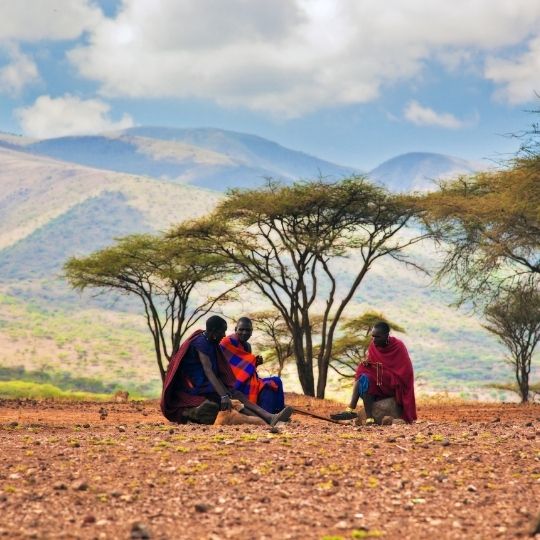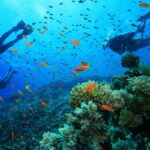Kenya is at the vanguard of ecotourism in Africa and allows tourists to explore the wildlife conservation jurisdiction and the country’s scenic beauty. From the sweeping plains of Maasai Mara to the lush forests of Mt. Kenya, passion for sustainable tourism has been widely embraced in Kenya to help conserve the country’s diverse wildlife.
Analysing the Ecotourism Impact on Kenya

The correlation between conservation and tourism entails more than just the ability to observe wildlife within Kenya. Therefore, the residents, conservationist organisations, and tour operators collaborate in designing the experiences to fit the visitors and the natural setting.
Kenya is arguably one of the most successful models of ecotourism in Africa, signifying how tourism plays a significant role in the protection of wildlife conservation and in helping affected communities.
Community-Based Conservation Initiatives

Key strength of Kenya’s ecotourism model is the extent to which local communities are involved in the conservation process. Some conservancies, for example, employ the Maasai people, enabling them to practice their traditional way of life as they earn an income through tourism. These partnerships have led to:
- High population densities of wild animals within protected regions
- Local infrastructure and education are likely to get a boost.
- Ensuring Indigenous communities have sustainable income columns
- Increased physical security measures of strategic wildlife connections
Some of the famous sites for ecotourism in Kenya
The Maasai Mara Ecosystem

The Maasai Mara retains its position of Kenya’s pride in ecological tourism. Being a hub of the Great Migration and numerous conservation projects, this area provides a perfect example of how tourism works with nature. Visitors can:
- Visit during the wildebeest migration period from July to October.
- Spend nights in basic eco-friendly lodges that are energised by solar electricity.
- Take nature walks with Maasai warrior guides
- Go to socially responsible programs and local initiatives funded by tourism income
Amboseli National Park

Amboseli is a classic example of good elephant conservation standards, home to some of the most significant elephant troops and boasting breathtaking sceneries of Mount Kilimanjaro. The park’s ecosystem demonstrates how:
- It is worth mentioning that long-term research plays a vital role in protecting wildlife.
- It can thus be concluded that human-wildlife conflict can be effectively managed.
- Sustainable tourism helps fund conservation efforts.
- Some of the advantages of wildlife conservation are as follows;
Conservation Success Stories

The Black Rhino Recovery Programme is an initiative implemented to help conserve the species. Kenya’s commitment to wildlife conservation could hardly be described as anything other than exemplary. Perhaps the most evident proof is the fight for the black rhino’s survival. Through coordinated conservation initiatives, Kenya has:
- Spruced up the black rhino population by 400% from what it was in the 1980s.
- Set safe havens within the park areas
- Put in place sophisticated anti-poaching strategies
- Developed successful breeding programs
Coastal land is a critical conservation area because it has significant biological productivity and is a vital habitat for various forms of marine life. Even though Kenya is well known for its savanna biomes, other regions, such as coastal areas, must be preserved.
Projects along the Indian Ocean coast focus on:
- Preserving coral reef ecosystems and sea creatures
- Promoting the sustainable use of fishing resources
- Conserving mangrove forests
- Responsible beach tourism
Ways of practicing Eco Tourism in Kenya

Selecting Sustainable Lodging
Accommodation choices, therefore, play a crucial role while on a trip to Kenya in terms of conservation. Look for lodges and camps that:
- Use renewable energy sources
- Employ local staff
- Practice water conservation
- Support community projects
- Minimize plastic usage
Responsible Wildlife Viewing
To ensure your visit supports conservation efforts:
- Remember to adhere to the rules and regulations of the park.
- Aim to refrain from getting too close to the wildlife.
- Hire certified guides and tour operators
- Try not to interfere with the animals’ normal activities
- Support protected area fees
Conservation Tourism and its Prospects for Kenya
Kenya continues to innovate in ecological tourism, with new initiatives focusing on:
- Role of Technology in Wildlife Observation
- Sustainable game viewing or conservation-friendly wildlife tourism
- Increased community engagement
- Expansion of protected areas
- Conducts conservation education programs among youths
Tourism and Conservation Support

Visitors to Kenya can actively contribute to conservation efforts by:
- Selecting certified tour operators who embrace environmentally sustainable activities
- Engaging in conservation activities within the society
- Promoting local handicrafts to sell in local centres
- This action complies with the standards of responsible tourism:
- The general public is raising awareness of the issue of conservation.
Conclusion
There is no doubt that Kenya has adopted the best policy on ecotourism and the conservation of wildlife tourism. Selecting Kenya and engaging in other environmentally conscious tourism practices benefits travellers in that they help promote the preservation of some of the magnificent ecosystems and species on the planet.
The continuation of tourism that ensures responsible tourism will positively impact Kenya’s conservation; hence, every trip to the Kenya park is a commitment towards the sustainability of the African wildlife heritage.
It maintains the presence of various species of wildlife in Kenya and employs the locals through tourism. Thus, Kenya’s devotion to preserving the environment through sustainable tourism increases with time, offering hope for future generations.





